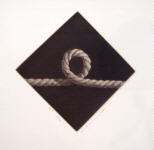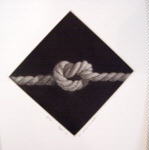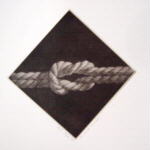Beginning March 29, 2006 The Williams Gallery Oriental Art Room is open to
the public. A wide selection of work by three Japanese artists is available to
be seen. There are over 30 new woodblock prints by Yoshikatsu Tamekane, some 15
lithographs by Susumu Endo and several mezzotints by Katsunori Hamanishi. More
work will become available on a regular basis. Pre viewing of the art is
available by appointment.
ABOUT THE GALLERY:
The Williams Gallery of Princeton New Jersey is in the process of relocating to
the South Florida area. Gallery owner Mary Lou Bock has directed her art gallery
in Princeton since 1985. Representing an international group of artists from
Japan, The Netherlands, Australia and the United States, Ms. Bock is delighted
to join with her son William Bock, owner and director of Fine Art and Frames in
Davie, Florida, in presenting this exhibit.
ABOUT THE EXHIBIT:
Works by three of Japan's most esteemed printmakers, Susumu Endo, Katsunori
Hamanishi, and Yoshikatsu Tamekane are on view at the Williams Gallery Annex.
Each of the artists has an unique style and medium yet each respects and
incorporates the Japanese aesthetic of supreme craftsmanship and attention to
detail. Simultaneously they bring contemporary techniques and culture into their
work with an underlying quality of ‘Zen’.
Contemporary prints from Japan have received wide recognition internationally,
and the gallery’s artists are the recipients of an extraordinary number of
honors and prizes at exhibitions throughout Europe, North and South America and
Asia. The current work at The Williams Gallery is a continuing demonstration of
the gallery’s interest in Japanese printmaking. A wide selection of work by
these innovative printmakers are available.
ABOUT THE ARTISTS:
Katsunori Hamanishi
Like the surrealistic paintings of Dali and Magritte, Hamanishi's mezzotints
combine nature and abstraction. Born in Hokkaido, Hamanishi studied painting and
graduated from Tokai University with a degree in Art in 1973 and next studied at
the University of Pennsylvania on a grant from the Cultural Affairs Agency,
1987-88. He has won numerous prizes for his work, including the Ibiza
International Print Biennial, the Grenchen International Triennial in
Switzerland and the Valparaiso International Exhibition in Chile.
Now living in the Tokyo area, Hamanishi’s primary focus is printmaking. His
works are in the permanent collections of the Metropolitan Museum and the MOMA
in New York; the Art Institute, Chicago; the Library of Congress, DC; Taipei
Fine Arts National Museum; Krakow National Museum; Osaka National Museum of Art;
and others. In September 2004 was honored in a two-man show along with venerated
mezzotint artist Yozo Hamani at the Worcester Art Museum in Massachusetts, where
he presented a demonstration of his own techniques.



Rope A, B and C
© 1980 Katsunori Hamanishi
Hamanishi’s subjects embody traditional Japanese symbols and images combined
with a contemporary interpretation. Few contemporary artist have the time and
patience to rock a plate with a mezzotint rocker long enough to produce the
velvety black impression so characteristic of the best work. Hamanishi explains:
"It is patience that is necessary to produce the jet-black texture peculiar to
mezzotint; the foundation of infinite tones from black to white. This is similar
to the grounding of an oil painting before the image is applied. To prepare the
copper plates may take 10 – 13 hours using a process called ‘burring”. A
comb-like tool is rocked methodically, vertically, horizontally and diagonally
over the plate until it is completely covered with impressions made by its
teeth. It is after the plate is burred that the drawing of the image into the
prepared surface begins.”
Yoshikatsu Tamekane
Born in 1959, Yoshikatsu Tamekane studied at Sokei Academy of Fine Arts in
Tokyo. From 1991 to 1994 he lived in Paris while studying art at the Musee
d’Orsay, the Louvre and the Centre Pompidou. He is a member of the Japan Print
Association and has shown seven consecutive years in the prestigious CWAJ Print
Show. He is known for his combination of technical prowess with a mystical
aesthetic and vision.
Tamekane’s medium is woodblock printing. He uses handmade papers and water-based
ink that allow him to manipulate light as deftly as any impressionist. He
augments his woodblock with a technique called collograph, in which various
materials are collaged onto the carved woodblock to provide texture on the
surface of the print. He frequently adds rich textural qualities, such as silver
and gold leaf to his work.
In September 2003, Mr. Tamekane was artist-in-residence at the University of
Pennsylvania School of Design. In May of that year, he had an exhibit of new
work and gave a demonstration of his woodblock techniques at the Montgomery
Center for the Arts. A selection on 30 new works and many earlier works are
available to be seen. About his work the artist says, "I savor the past and also
look forward to the next century as a time of hope and advancement for the human
spirit”.
Susumu Endo
Susumu Endo blends photographic and non-photographic processes via computer,
mixing the reality of the natural landscape with abstraction to create a
singular surrealistic image – a mingling of nature and a space continuum. Born
in 1933, Endo came to printmaking by way of graphic design. He uses the computer
as a tool to enhance and manipulate his already exquisite photographs and
drawings, which are then produced as lithographs. Endo says, “My basic concept
of design is “space and space.” I feel there are different levels of
consciousness that we can have of space, all coexisting at once. This is the
concept that drives all the work I create. My main theme is the relationship of
two different dimensions in space: the real and the imaginary.”
Endo graduated from the Kuwasawa Design School in 1962 and then spent 5 years in
a small design studio. His art soon became recognized and after producing a
calendar for Audio-Technica, his images have appeared commercially and in the
collections of museums throughout Europe, The United States and Japan. His
images employ a skill and beauty that challenge our sense of reality. In
contrast with Endo’s use of leading edge technology his work evokes a meditative
serene quality akin to the atmosphere of a traditional Japanese tea ceremony. To
Endo the tea ceremony is a vital part of his life.
